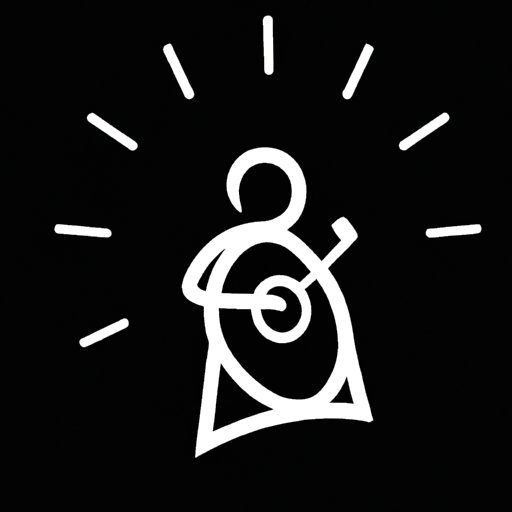Introduction
If you’ve ever been moved by a song, felt the pull of a dance beat, or found yourself tapping your foot to a rhythm, you’ve experienced the power of rhythm. Rhythm is a fundamental element of music and dance, but it’s also an important aspect of our daily lives. This article will explore the science of rhythm, its historical significance, and its role in various forms of art and music, offering readers a guide to understanding this important concept.
The Science of Rhythm and its Effects
Rhythm is the pattern of sounds and silences that move through time. Our bodies and minds respond to rhythm in powerful ways. Research has shown that rhythmic patterns can influence heart rate, breathing, and brain activity, leading to changes in mood and behavior. The repetition and predictability of rhythmic patterns can provide a sense of comfort and security, while sudden changes in rhythm can create excitement and tension.
Studies have also shown that listening to music with a strong beat can increase activity in the brain’s reward center, leading to feelings of pleasure and happiness. Rhythmic movement, such as dancing or drumming, has been used for centuries to promote healing, reduce stress, and enhance social bonding.
A Historical Perspective on the Use of Rhythm
Rhythm has been an integral part of human culture for thousands of years. From ancient tribal chants to modern hip hop, rhythm has been used to tell stories, build community, and celebrate life. In many cultures, rhythm is tied to spiritual and religious practices, and is believed to have the power to connect people to the divine.
Throughout history, rhythm has been used in various musical traditions, including African drumming, Indian classical music, and European classical music. In many cultures, rhythm is intricately tied to dance, and is used to create a sense of unity and collective energy among dancers.
With the rise of technology, the use of rhythm in music has become more complex and varied. Electronic music, for example, relies heavily on programmed rhythms and beats to create its signature sound.
Components of Rhythm in Music
In music, rhythm is created through a combination of elements, including tempo, meter, and groove. Tempo refers to the speed of the beat, while meter is the pattern in which beats are organized (such as 4/4 time or 3/4 time). Groove refers to the feel or swing of the beat, and can vary depending on the genre of music.
Each genre of music utilizes these rhythmic concepts in unique ways. For example, jazz music often features complex rhythms and syncopated beats, while electronic dance music relies heavily on repetitive, driving beats to create a sense of energy and momentum. Rhythm can also be used to create emotion and tension in music, such as slow, mournful rhythms in a sad ballad or fast, frenzied rhythms in an action-packed score.
Rhythm in Dance
Dance and rhythm have been closely linked throughout history. From traditional folk dances to contemporary hip hop routines, rhythm plays a crucial role in the movement and emotion of dance. Different genres of dance utilize rhythm in unique ways, with some focusing on precise, intricate synchronization while others prioritize individual expression and improvisation.
Through dance, rhythm can be used to tell stories, convey emotion, and celebrate culture. In many forms of dance, rhythm is not simply heard, but is felt in the body through movement and physical expression. This connection between rhythm and movement is what makes dance such a powerful and expressive art form.
Cultural Significance of Rhythm
Rhythm is not just a musical or artistic concept — it has a deep cultural significance in many parts of the world. In some cultures, rhythm is tied to religious practices and is used to connect people to the divine. In others, it is a key part of traditional celebrations and festivals, such as Brazil’s Carnival or India’s Holi festival.
Across different cultures, rhythm has played a significant role in shaping music and art. African rhythms have inspired genres such as jazz, blues, and rock and roll, while Indian classical music has influenced contemporary composers and performers. The universal appeal of rhythm has enabled it to transcend cultural boundaries, creating a shared human experience that connects us all.
Conclusion
Rhythm is a powerful and universal concept that is essential to music, dance, and culture. Whether it’s the thumping beat of a dance club or the intricate rhythms of a classical symphony, rhythm has the ability to move us, transform us, and connect us. By exploring the science, history, and components of rhythm, we can gain a deeper appreciation for this essential element of our lives, and use it to enrich our creative pursuits and connect with others.
